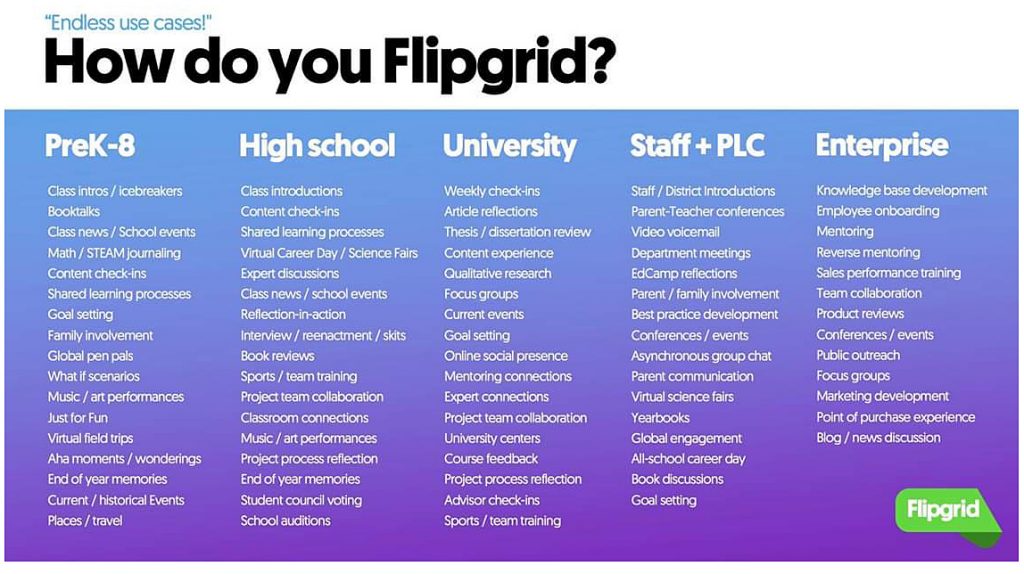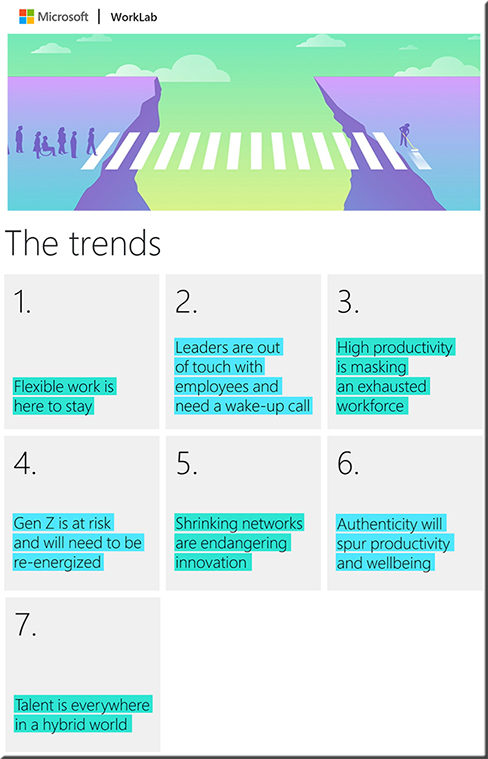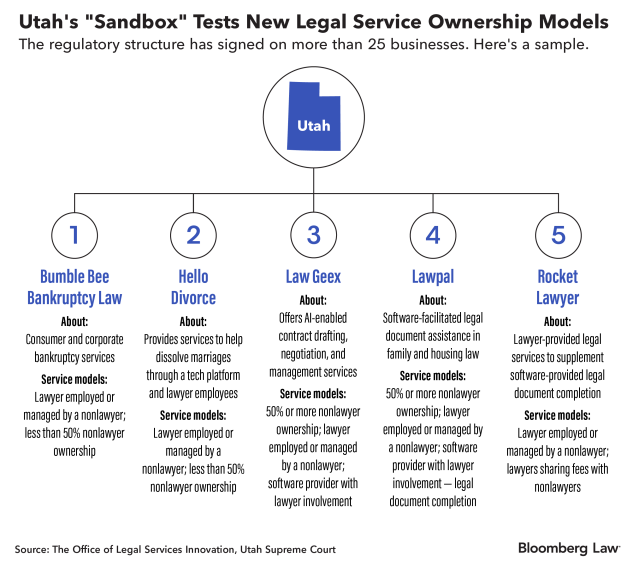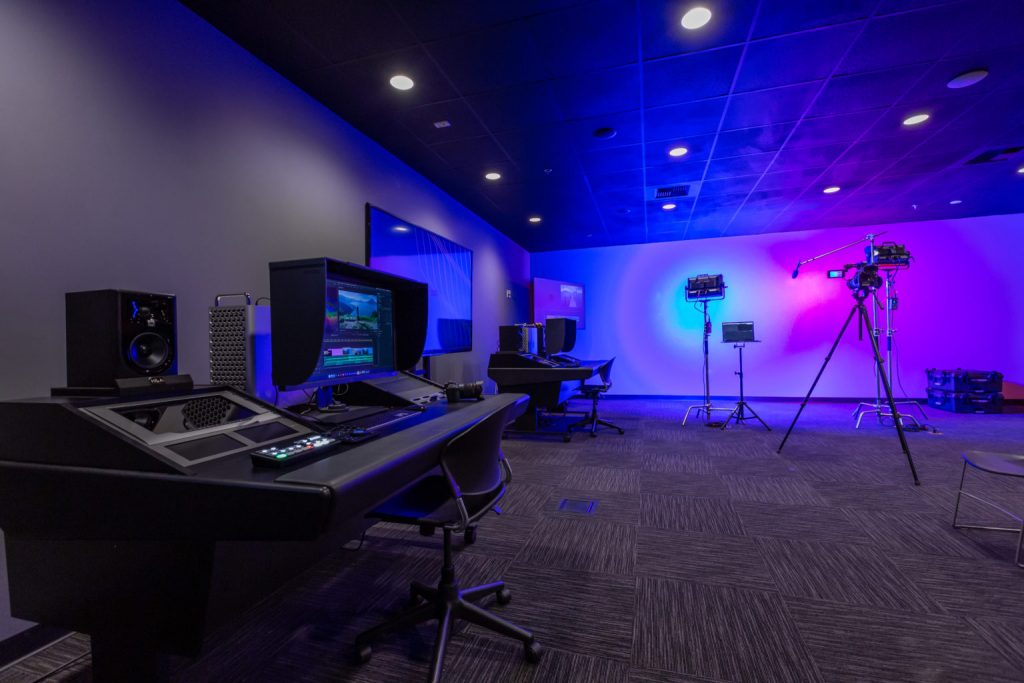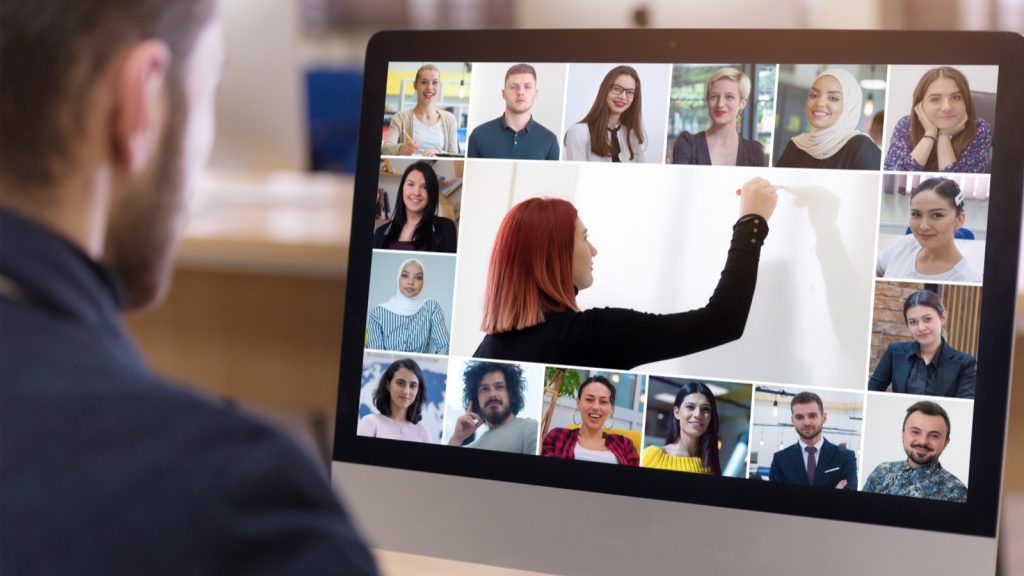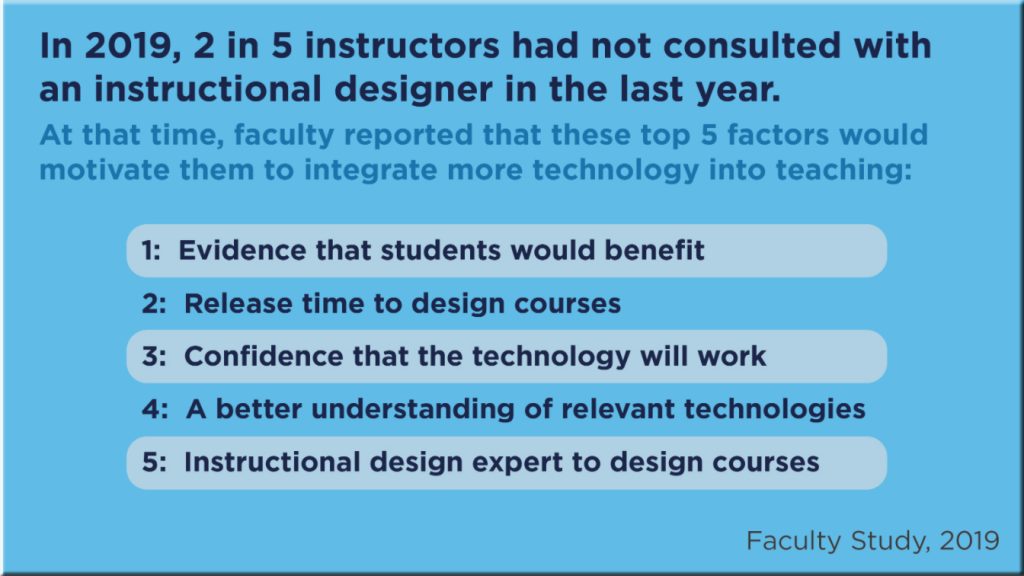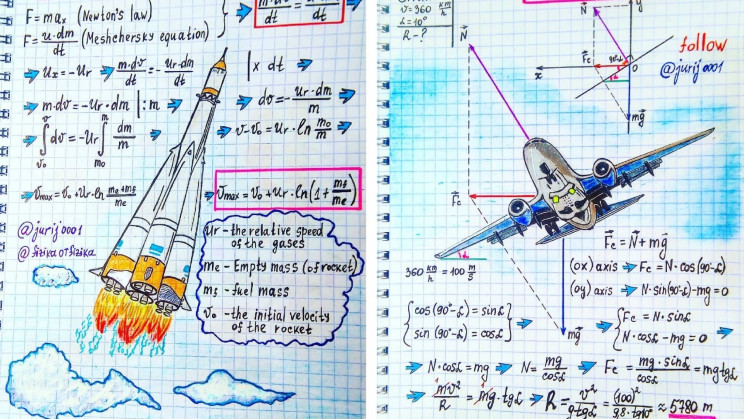40 Ideas For Using FlipGrid In The Classroom — from teachthought.com
The Next Great Disruption Is Hybrid Work—Are We Ready? — from Microsoft
“Over the past year, no area has undergone more rapid transformation than the way we work. Employee expectations are changing, and we will need to define productivity much more broadly — inclusive of collaboration, learning, and wellbeing to drive career advancement for every worker, including frontline and knowledge workers, as well as for new graduates and those who are in the workforce today. All this needs to be done with flexibility in when, where, and how people work.”
Satya Nadella, CEO at Microsoft
Also see:
- What executives are saying about the future of hybrid work — from mckinsey.com by Andrea Alexander, Rich Cracknell, Aaron De Smet, Meredith Langstaff, Mihir Mysore, and Dan Ravid.
- What’s next for consumers, workers, and companies in the post-COVID-19 recovery — from mckinsey.com by Susan Lund, Anu Madgavkar, Jan Mischke, and Jaana Remes
- For mothers in the workplace, a year (and counting) like no other — from mckinsey.com by Jess Huang, Alexis Krivkovich, Ishanaa Rambachan, and Lareina Yee
Record, transcribe, clip, and share video from Zoom in real-time. — This Grain tool/resource is from Jeremy Caplan’s Wonder Tools newsletter. Thanks Jeremy for passing this info along!
From DSC:
These kinds of tools should make for interesting discussions in online-, hybrid-, and hyflex-based courses…as well as in microlearning-based streams of content perhaps.
Law Firm Deregulation Programs Pick Up Speed in Utah, Arizona — from news.bloomberglaw.com by Sam Skolnik
Excerpt:
Efforts to allow non-lawyers to own law firms in Arizona and Utah are picking up steam, as participating companies say it’s inevitable that more states will be following similar paths.
Utah’s regulatory “sandbox” and Arizona’s “alternative business structures” program are being closely watched by the country’s largest law firms like Snell & Wilmer, which is actively weighing the possible benefits.
“Snell & Wilmer has considered and is considering opportunities that these changes may present to a traditional law firm,” said Mark Morris, a Salt Lake City-based partner with the firm, which also has offices in Phoenix and Tucson, Arizona. The firm, he said, “is closely watching the successes and failures of others who are actively participating in these programs to help guide any future decisions.”
Video Lectures: 4 Tips for Teachers — from techlearning.com by Erik Ofgang
Creating short and engaging video lectures for students is a growing trend at education institutions
Excerpt:
To encourage a more professional type of evergreen video resource, the institution has invested in lecture capture studios, adding five new ones over the past year so each campus has at least one. Some of these studios are DIY, others require a crew, but all enable professors to record lectures in a professional recording environment, complete with green screens and high-quality lighting and audio. The recordings are then edited by the studio team who can help the professor follow the best pedagogical practices for video recordings, including keeping videos short and engaging.
From DSC:
A great example of using of teams to create higher-quality, engaging, interactive learning content.
Also see:
Adorama Business Solutions Equips New Classroom Studio for West Coast Baptist College Creative Arts Department — from svconline.com
Workspace Allows Department to Expand Video Production and Editing Course Offerings
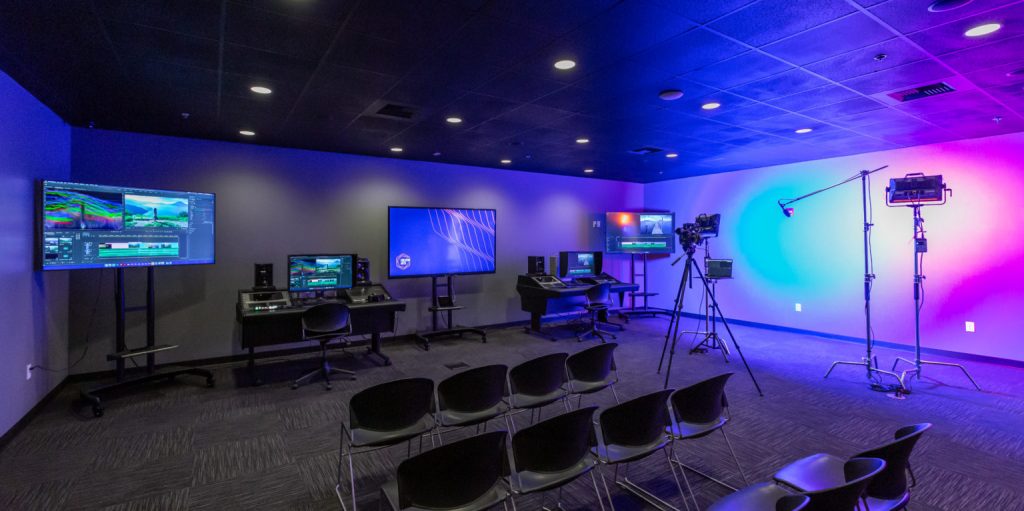
Faculty and Staff Often Don’t Trust One Another. How Do We Fix That? — from chronicle.com by Jenae Cohn
Three ways to bridge divisions as academe prepares for the post-pandemic era.
Excerpts:
One of the few welcome outcomes of Covid-19, and higher education’s rapid move to remote instruction, is that many faculty members are more aware than ever of who the staff members are and what we do.
As Lee Skallerup Bessette wrote in October, staff members — anyone working on a college campus who is not a professor or an administrator — have been on the front lines during the pandemic: “We are the face that faculty members see when they have questions, concerns, or struggles with the technology they have been asked to use. We are the face that students see when they have questions, concerns, or struggles related to distance learning or on-campus policies and procedures.”
Yet however much academics and administrators have been turning to us for help now, they still rarely involve and entrust staff members with campus decision-making around teaching, curriculum development, and research.
…
It behooves every college and university to consider what authentic collaboration between the staff and the faculty might look like. How? Here are three concrete steps in that direction.
.
Step 1: Offer incentives for faculty-staff partnerships.
Step 2: Rethink hierarchical traditions.
Step 3: Create shared experiences.
From DSC:
Although I was an Adjunct Professor for over 5 years and have worked alongside faculty members for 20 years, the majority of my work and efforts have mainly been on the staff side of the house. So I appreciate The Chronicle hosting this article and I thank Jenae for writing it. It’s an important topic.
If traditional institutions of higher education are going to survive, there needs to be much broader governance, a much greater use of teams to create and deliver learning experiences, and a much stronger culture of innovating and experimenting with new ideas. At the end of the day, I think that the following two things will be the deciding factors on whether a particular institution survives, merges, shrinks, or closes its doors altogether:
- The culture of a particular institution
- Whether that institution has visionary leadership or not (and not just being data-driven…which comes up short again and again)
Also see:
- Debunking six continuing fallacies of higher education — from universityworldnews.com by Sanjit Sethi and Elliot Felix
How to Design a Hybrid Workplace — from nytimes.com
Excerpt:
But many companies have hatched a postpandemic plan in which employees return to the office for some of the time while mixing in more work from home than before. The appeal of this compromise is clear: Employers hope to give employees the flexibility and focus that come from working at home without sacrificing the in-person connections of the office.
From DSC:
There has been — and likely will continue to be — huge pressure and incentives put on companies like Cisco, Zoom, Microsoft, and others that develop the products and platforms to help people collaborate and communicate over a distance. It will be very interesting to see where these (and other) vendors, products, and platforms are 2-3 years from now! How far will we be down the XR-related routes?
How will those new ways of doing things impact telehealth? Telelegal? Virtual courts? Other?
Also see:
EDUCAUSE QuickPoll Results: Assessment and Learning Design — by Mark McCormack
Excerpt:
Respondents expressed confidence that recent increases in faculty engagement with instructional design and technology will continue in future academic years, as will institutions’ adoption of hybrid/online education. Respondents are less confident that larger changes in institutional policy and practice will persist, and they do not anticipate that institutions will be investing in key instructional needs in the future. Increases in cross-department collaboration hold great promise for leaders seeking to engage faculty and make wider and more lasting strategic changes. Long-term success for new approaches to teaching and learning may rely at least in part on clear and consistent policies and practices across the institution, as well as a shift in institutional narrative from “short-term crisis mitigation” to “innovation for the future.”
AI in the Legal Industry: 3 Impacts and 3 Obstacles — from exigent-group.com
Excerpt:
In this article, we’ll talk about three current impacts AI has had on the legal industry as well as three obstacles it needs to overcome before we see widespread adoption.
Consider JPMorgan’s Contract Intelligence (COIN) software. Rather than rely on lawyers to pour over their commercial loan contracts, the banking giant now uses COIN to review these documents for risk, accuracy and eligibility. Not only does this save JPMorgan 360,000 hours per year in contract review, it also results in fewer errors. One can also look to major law firms like DLA Piper, which now regularly rely on AI for M&A due diligence. At Exigent, we’ve had first-hand experience using AI to support document analysis for our clients as well.
2. Legal departments need to build cross-functional expertise
…bringing greater diversity into the legal department is essential if the efficiencies promised by AI in the legal industry are to be realized.
Fortunately, some legal departments have begun to bring data scientists on board in addition to lawyers. And the industry is beginning to open up to hybrid roles, like legal technologists, legal knowledge engineers, legal analysts and other cross-functional experts. It’s clear that a greater diversity of skills are in the legal department’s future; it’s just a matter of how smoothly the transition goes.
DC: Peering into the future, the significant ***use of teams of specialists*** within the #legal realm will likely be the case.#lawschools #law https://t.co/pY5GkLvH00 Article via @GTeninbaum pic.twitter.com/3uFXs6sczs
— Daniel Christian (he/him/his) (@dchristian5) February 10, 2021









